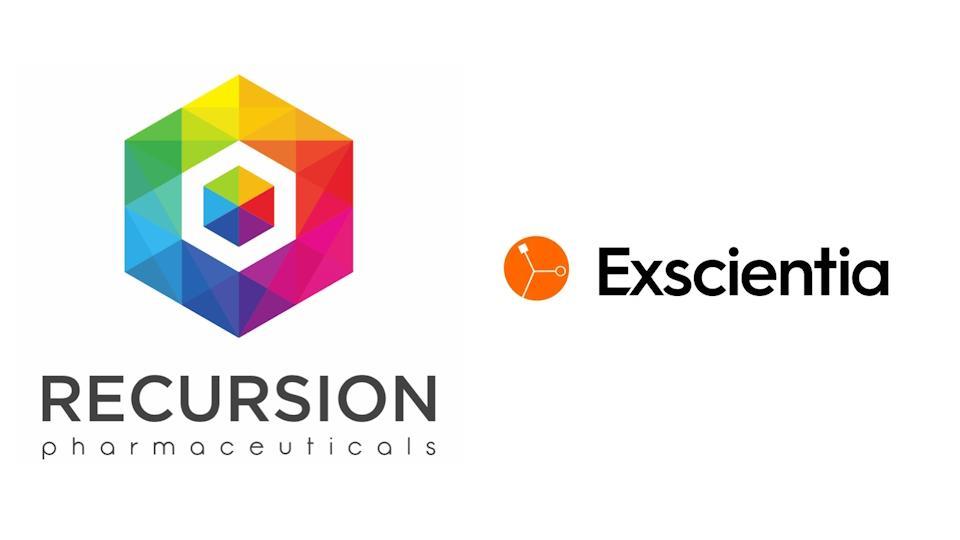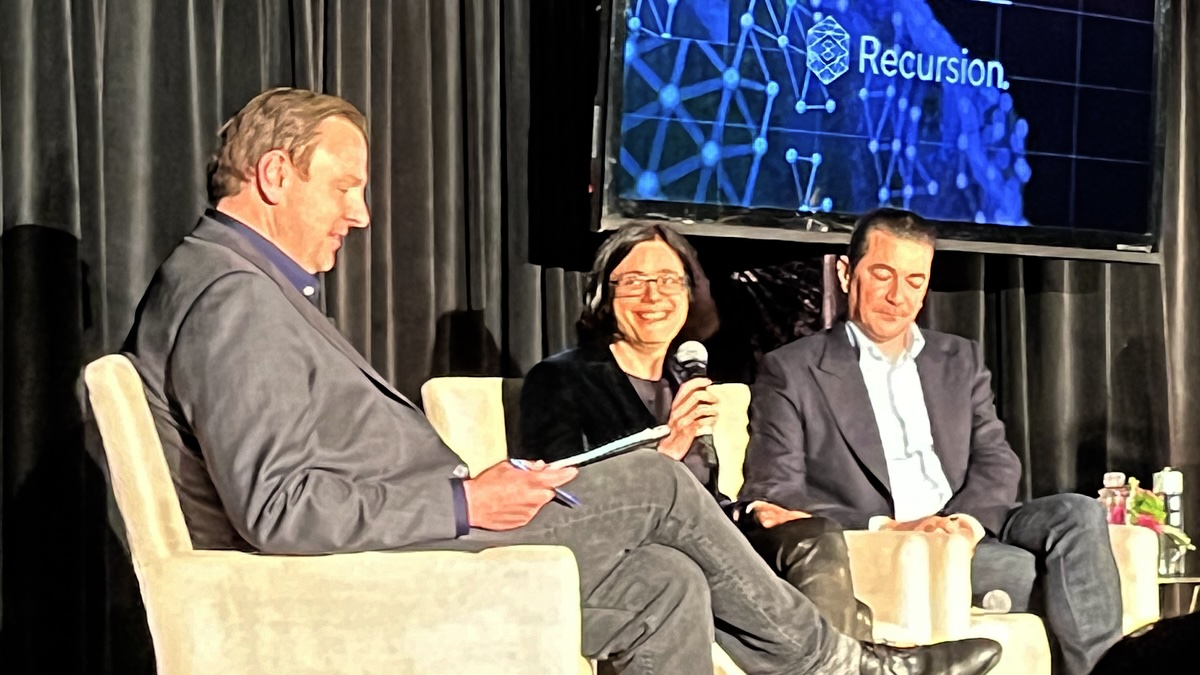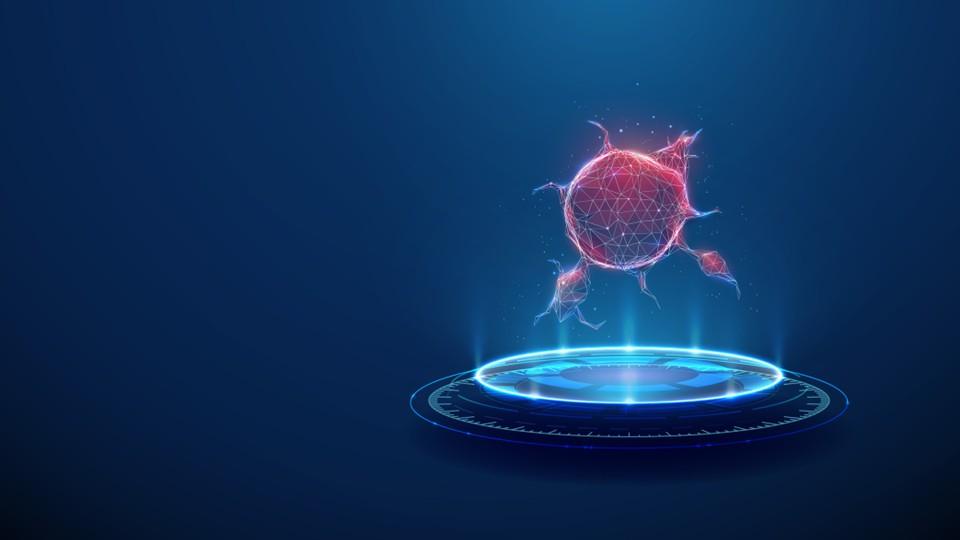Recursion, Exscientia, and AI drug discovery’s moment of truth

Last week, two of the biggest and oldest companies in the burgeoning AI drug discovery space announced a surprise merger. In a roughly 75-25 deal, Recursion Bio and Exscientia will (if the merger goes through) become one company, combining Recursion’s expertise in biology with Exscientia’s focus on chemistry.
Cody Powers, a life sciences consultant at ZS Associates, says the deal took him by surprise in its particulars, but broadly it makes sense, for a number of reasons. And examining those reasons can tell us some truths about the peculiar position this space is in right now.
Waiting for a win
The AI drug discovery market is worth about $1.4 billion but it hasn’t, so far, produced a single approved, marketed drug, despite some of the most notable companies – including Recursion, Exscientia, BenevolentAI, and Atomwise – being more than a decade old at this point.
That’s not as much of an indictment as it sounds like, because drug development takes a long time and the hit rate for traditional drug discovery is so low. But it is the reality: billions of dollars are being invested in a promising AI technology whose value is, in a sense, still theoretical.
(There’s also an asterisk on that figure, Cody says, as it depends on which companies you include in your analysis. Abcellera, for example, designed Lily’s COVID antibody using AI, along with a large library of mouse models. But it wouldn’t be considered “pure play” AI.)
Nonetheless, the first pure play AI drug discovery company that makes it to the finish line, creating a real, revenue-producing drug, is going to have a pretty significant feather in its cap.
And Recursion just increased its shots on goal from seven to 11, plus four additional projects being carried out with big pharma partners. They have 10 readouts coming in the next 18 months.
“Of the whole AI drug discovery, these were literally two of the first three companies to have clinical trial results. They're both collectively at the forefront of possibility,” Powers said (the third is BenevolentAI). “Unfortunately, the first three all came up negative. That did catch a little bit of a shadow of ‘is it all bark, no bite?’”
A gradual shift in business models
A decade ago, when these AI drug companies first began to emerge, they saw themselves as service companies for pharma: . let’s de-risk the messy business of drug discovery, find promising targets, and then sell them to pharma to carry out the expensive process of development, getting bonus payments if the drug works out.
Those deals are still active, but somewhere along the way these companies realised they could capture more value if they put their money where their mouths were and developed these drugs themselves.
What does this have to do with the timing of a major merger? Well, if these companies commit to seeing their candidates through, and their promised pace of discovery pans out, they could find themselves with a lot of work on their hands. And a larger operation could make a big difference.
“No one's really reached the level in scale of this massive forecasted surge in productivity and being able to operationalise it with having 10 Phase 2 programmes at once,” Powers said. “Before, time, capital, and legacy discovery tools were such rate limiting factors that no one ever had to deal with a problem of massive surge in number of programmes that we crank out from discovery, such that we were just going to burst at the seams […] You had to be careful, so you picked carefully and you only put so much in the clinic. Now, it's the opposite and you churn out programmes left and right. It'll start to feel like, in an ideal world, the whole ‘fail fast’ concept in tech companies.”

Recursion CEO Chris Gibson sits on a panel at an event with Nvidia at JP Morgan 2024.
Warding off new competitors
A third reason Recursion and Exscientia might have seen this as the right moment for consolidation is that when a brand-new company hits the scene in a space you’ve been working in for 10 years with a billion dollars in investment and heavy hitters from Genentech at the helm, it tends to make the incumbents sit up and a pay attention.
Powers says Xaira, which launched at the end of April, has both molecular drug design and fundamental biology expertise and would certainly provide incentive for Recursion to want to shore up its tech stack.
“You can't just specialise and do one part of the development process well, just do the biology well, just do the molecular design process well. You have to have it all,” Powers says.
Especially when it comes to those big pharma partnerships, which are still a big part of the ball game.
“If you're a pharma company trying to sign partnerships, there's tremendous potential friction if you have to contract multiple vendors of - this one's doing my biology, this one's doing my drug design - then they have to talk to each other, and one is the input of the other. There could also be major deal implications. What if I owe four or five points of revenue to this one, and I owe three or four points to this one? Then eventually that royalty stack starts to add up and it's cutting into your profitability long term.”
In the companies’ “Learnings call” explaining the merger, Recursion CEO Chris Gibson talked up the value of combining the platforms.
“Our platforms at Recursion really focused on application of biology, hit discovery, target discovery,” he said. “We've been building that for over a decade and our colleagues at Exscientia have really been building for about the same amount of time this incredible precision chemistry platform. The ability to go from a hit to a development candidate with active learning and automated synthesis is really exciting to us and putting these two platforms together we think is going to put us on the cutting edge.”
A 10-year head start is something Xaira can’t buy, but Recursion and Exscientia alone only had half a head start. Now, they have 10 years of work in both biology and chemistry. Combining the businesses also gives the company a longer cash runway (around $850 million in the bank, per Gibson) which is important when the new kid on the block has a billion dollars in their pocket.
A watershed moment
Of course, one more reason I haven’t mentioned is that, for Exscientia, this may have been more or less of a lifeline. The terms of the deal speak for themselves, Powers said, when you consider Exscientia’s rough year.
“Given the ownership structure, which is basically three quarters for Recursion shareholders, one quarter Exscientia shareholders, it's hard for me to imagine that they would have done the deal in its current state without those two disappointing clinical trial outcomes for Exscientia,” he said. “I do think that's at least part of the logic here.”
But that doesn’t mean that some version of this deal wasn’t in the works regardless. Consolidation is generally agreed to be a sign of maturity in a market, especially a merger of peers like this one, as opposed to a large company gobbling up a smaller one.
Call it a quirk of pharma that we can have a maturing market without any products in it. That paradox may have some people feeling nervous, but that’s why Recursion’s strategy of framing the deal around the 10 readouts coming in the next 18 months is a good one, Powers says.
“This is all, I think, managing expectations,” he said. “The first card flip was bad. And there was so much hype and anticipation that people were just very disappointed. But they’re basically saying, if the whole concept is that probabilities are improved, give us more end size. Don't just judge us one by one readout. Let the end size play out first.”
They’re essentially framing the merger as a bet – or a double down – that the elusive proof point is coming in the next 18 months. Right or wrong, we’re headed for a moment of truth for AI drug discovery.












